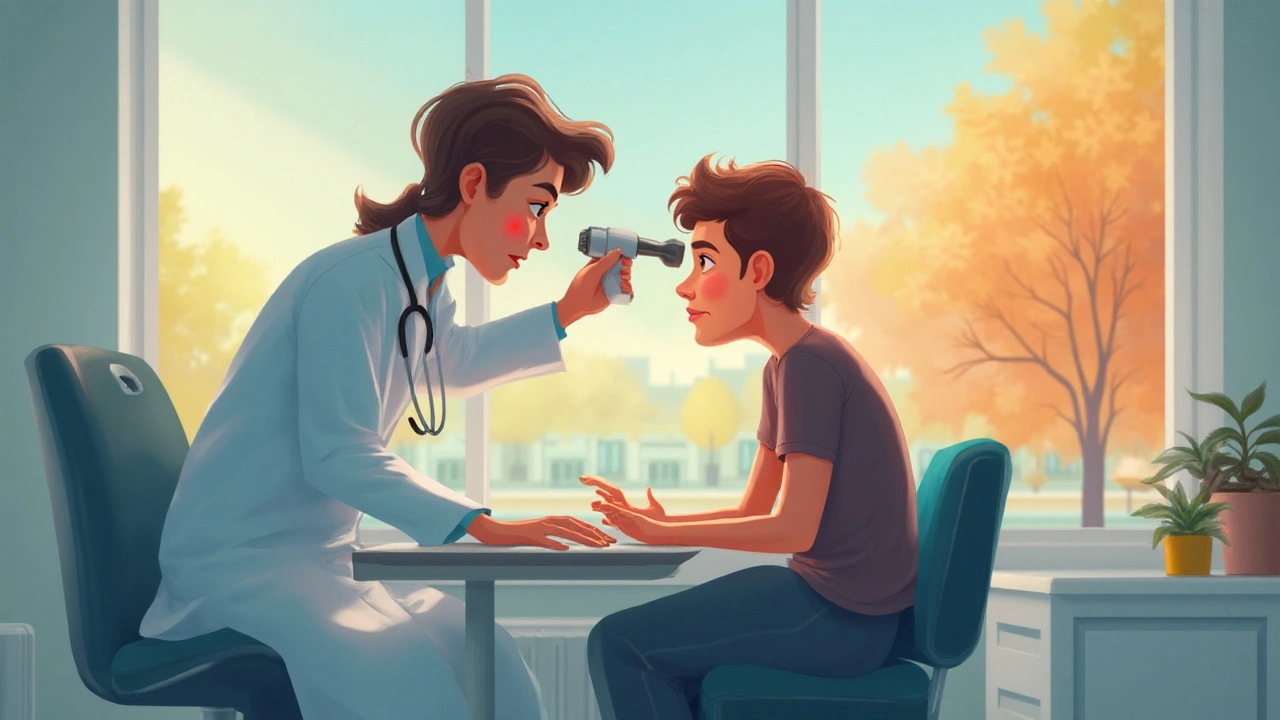Ear Canal Infections and Headaches: How They're Linked and What to Do

Sep, 24 2025
Ever notice a pounding headache after a few days of itchy, red ears? You’re not imagining it-there’s a real physiological link between ear canal infection and head pain. This article breaks down the anatomy, why the pain spreads, how doctors figure it out, and what you can do to stop the cycle.
What Is an Ear Canal Infection?
Ear canal infection is a type of outer ear inflammation, medically known as otitis externa, that affects the skin lining the external auditory canal. Common triggers include water exposure, bacterial overgrowth, or skin conditions like eczema. Symptoms usually start with itching, redness, and a feeling of fullness, then progress to pain that worsens when you pull on the earlobe or chew.
How Infections Trigger Headaches
The ear isn’t an isolated organ; it shares nerve pathways with the head. When the canal inflames, the trigeminal nerve carries sensory data from the face, scalp, and ear to the brain. Inflammation activates pain fibers that travel alongside this nerve, causing what doctors call “referred pain.” In other words, the brain interprets the signal as a headache even though the source lies in the ear.
Inflammatory chemicals-like prostaglandins and cytokines-also spread locally, irritating the surrounding tissues. This inflammation is a protective response that can amplify pain signals throughout the connected nerve network. When the pressure builds, you may feel a dull, throbbing ache behind the ear that radiates to the temples.
Symptoms That Overlap With Other Headache Triggers
Because the ear shares pathways with the sinuses, jaw, and neck, an ear canal infection can mimic or aggravate other conditions:
- Sinusitis is inflammation of the sinus cavities that often produces pressure around the eyes and forehead. The congestion can worsen ear pain, and vice‑versa.
- Temporomandibular joint disorder (TMJD) involves the joint that connects the jaw to the skull, creating aching that radiates to the ear. Chewing may aggravate both the joint and an inflamed ear canal.
- Cervical spine tension refers to tight muscles in the neck that can refer pain into the ear region. Poor posture or stress can make an existing ear infection feel worse.
Understanding these overlaps helps you explain the full picture to a clinician, ensuring they don’t miss the root cause.
Diagnosing the Connection
When you visit a doctor, the first tool they’ll use is an otoscope a handheld device that illuminates and magnifies the ear canal for a visual exam.. The clinician looks for redness, swelling, and any discharge that signals infection.
If the headache pattern is unusual, they might order a CT scan which provides cross‑sectional images of the head and ear structures. This can rule out deeper issues like mastoiditis or sinus disease.
Because the trigeminal nerve plays a key role, some specialists also perform a nerve sensitivity test, gently pressing around the ear to see if the pain radiates to the temples.

Effective Treatment Options
Therapy usually targets two fronts: clearing the infection and breaking the pain cycle.
- Antibiotic ear drops contain agents like ciprofloxacin that directly combat bacterial growth in the canal. They’re applied 2‑4 times daily for about a week.
- Analgesics such as ibuprofen or acetaminophen help lower inflammation and relieve headache pain. Taking them with food reduces stomach irritation.
- Warm compresses applied to the outer ear for 10‑15 minutes can improve circulation and speed healing.
- If sinus pressure is a factor, a short course of decongestants like pseudoephedrine can relieve nasal blockage and lower ear canal pressure..
- Addressing TMJ or neck tension with physiotherapy or gentle stretching can remove secondary pain generators.
Most patients notice headache relief within 48‑72 hours once the ear infection starts to clear.
Prevention Tips to Keep Headaches at Bay
Stopping an ear canal infection before it starts is the best way to avoid recurring headaches:
- Keep ears dry after swimming-use ear plugs or a gentle towel‑dry.
- Avoid inserting cotton swabs; they can damage skin and push debris deeper.
- Use a mild, fragrance‑free cleanser if you’re prone to eczema in the ear canal.
- Maintain good nasal hygiene with saline sprays to reduce sinus pressure that can back‑track to the ear.
- Practice neck stretches and good posture to minimize cervical tension.
Comparison: Ear Canal Infection vs. Middle Ear Infection
| Attribute | Ear canal infection | Middle ear infection |
|---|---|---|
| Location | External auditory canal | Behind the eardrum (tympanic cavity) |
| Typical cause | Water exposure, bacterial overgrowth | Upper‑respiratory infection, fluid buildup |
| Primary symptoms | Itching, ear pain on manipulation | Fullness, muffled hearing, fever |
| Headache link | Referred pain via trigeminal nerve | Pressure headache from eustachian tube blockage |
| Treatment | Topical antibiotics, dry ear care | Oral antibiotics, decongestants |
Understanding these nuances helps you and your doctor decide whether a simple ear‑drop regimen will suffice or if a broader antibiotic course is needed.
Connecting to the Bigger ENT Health Cluster
This article sits within the broader ENT health area that covers ear, nose, and throat conditions, ranging from infections to allergic disorders.. Narrower topics you might explore next include “How to Treat Chronic Sinusitis” or “When to See a Specialist for TMJ Pain.” Each of those dives deeper into a specific pathway that can feed into ear‑related headaches.

Frequently Asked Questions
Can an ear canal infection cause a migraine?
Most ear‑related headaches are “secondary” headaches, meaning they result from another condition like an ear canal infection. While they can feel as intense as a migraine, they lack the classic aura and throbbing pattern of true migraines. Treating the infection usually resolves the headache.
How long does it take for the headache to disappear after starting treatment?
Most patients notice a reduction in pain within 48‑72hours of using antibiotic ear drops and pain relievers. Full resolution of the infection and any residual headache typically occurs within a week.
Is it safe to use over‑the‑counter ear drops for an infection?
OTC drops that contain a mild antiseptic can help mild cases, but if you have severe pain, discharge, or fever, prescription drops with antibiotics are recommended. Always consult a healthcare professional before self‑treating.
Can swimming trigger both an ear infection and a headache?
Yes. Water that stays trapped in the ear canal creates a moist environment for bacteria, leading to otitis externa. The ensuing inflammation can activate the trigeminal nerve, resulting in a headache. Using ear plugs and drying the ear afterward reduces risk.
When should I see a doctor for an ear‑related headache?
Seek medical care if the pain is severe, lasts more than three days, is accompanied by fever, dizziness, or hearing loss, or if you notice pus or blood coming from the ear.
